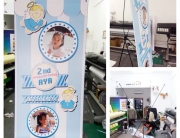Содержание
Water, dirt, walls, tall city buildings, and other obstructions can disrupt GPS reception significantly. Accuracy on its own can also be limited by a number of factors and errors. If we need to determine someone’s position inside a building or in an exact position in a dense downtown area, GPS can only do so much to support AR navigation.
We discovered and charted connections among data formats and software applications by analyzing similarities of purpose. Then we assigned categories to software types based on inductive reasoning, looking at commercially-available examples and detecting patterns and similarities . Finally, to examine indoor map file format compatibility we compared data formats in Tables 1 and 2 to the input formats in Table 3 and output formats in Table4. This article brings the problem into focus, which should spur enthusiasm to solve it. The article also considers solutions to interoperability problems, and offers what may be the most expedient solution.
The solution can be customized to meet the needs of the individual client. Indoor navigation is one of the latest technology that is much more in theory all over the world and in practice in a few places only. This is a new technology, which put into action will indeed assist a number of people all over the world, to explore new places without difficulty. That information is then fed into an application to make it useful for wayfinding. This is why the actual technology isn’t the only concern you should have when you choose an indoor navigation system.
Using graph theory to create directions with lines or arrows, users can be directed to their destination. GPS is made possible with satellites and https://globalcloudteam.com/ clever exploitation of the Doppler effect. Ground stations use radio signals to determine where GPS satellites are in orbit around the Earth.
But in general, the wide range of data formats hinders data integration and re-use.Footnote 1 Pfouga and Stjepandic demonstrate problems arising from the variety of CAD formats–but CAD is only one form of indoor map data. When data is not re-used easily or routinely, the life cycle is not sustainable. Above we have covered all the crucial aspects of indoor navigation mobile apps and how they can be created for best use by the businesses and providing many benefits to the users. Hence, if you are looking to create such an app, simply get in touch with an indoor navigation app development company to fetch desired results.

Hindering the cycle affects those involved — makers of software to generate indoor maps, makers of software that requires indoor maps as input, and also consumers of both types of software. Converting or re-creating map data from an incompatible format for an application can be slow and costly, and the resulting map may suffer data loss. Further, the lack of indoor maps of public buildings creates a barrier to effective emergency operations. In 2015, a Location-Based Services Summit to look at these and other problems was held with industry and academic members to determine what should be done first .
Progressive Web App
He directs all product initiatives, worldwide sales and marketing, and business enablement. He has spearheaded the journey in the e-commerce landscape for various businesses in India and the U.S. It eliminates the navigation bar area and allows a user to use full screen to deliver a more rich and immersive experience. The absolute position of a WIFI tower is also calculated using the above information .
However, Wi-Fi RTT technology, so long as three or more routers are involved, uses a multilateration algorithm. One of the key features that puts iPhones above Android devices in the AR arena is the LiDAR sensor. This hardware can make AR navigation easier due to its superior depth sensing capabilities, enabling ARKit to analyze depth in a scene at unprecedented speeds. This allows for quicker processing of AR experiences with higher accuracy. Provides high end-user experience in real-time gaming, navigation, and active voice calls. To review, interoperability can be achieved either through legislating or through the marketplace.
Results: Patterns Of Use Regarding Indoor Map Data
Our approach is to demonstrate the problem in the broken cycle for indoor map data. We begin with a qualitative comparison of 2D and 3D indoor map file formats that are used most widely . Chen and Clarke compare an even wider number of indoor map file formats with an excellent chart of standards and formats in their Table 1. By contrast, our research compares the format of files generated by software that creates indoor map files to the format of files input in some software that uses indoor maps. Recall that indoor map data commonly comes in 3D or 2D formats, shown in Tables 1 and 2.

Meanwhile, ARCore devices on Android phones are much more inconsistent because there is a great deal of hardware and software diversity between one Android phone to another. Since there are multiple manufacturers, it is more challenging for Google to come up with a consistent, reliable experience. Thus, there are two parts to AR navigation, the first being the actual navigation and localization, and then the display of AR directions as text, arrows, and paths on the screen. This second step is actually the easiest part of the whole process, with the more challenging element being identifying the user’s position. The global positioning system may have fundamentally changed how we traverse the Earth, but it has serious limitations for certain use-cases.
Applications That Depend On Indoor Map Data
The people who first responders are seeking to help need a solution just as badly. The FCC estimates that more than 10,000 lives can be saved annually with better and timely location information for 911 calls placed from cellphones, many of which are made from indoor locations. Since 2005, infsoft has been offering full-service solutions related to location and sensor data to major customers worldwide. It contains all the functionalities of the native app except for real-time localization.
- In terms of the standard, both open and proprietary have advantages and disadvantages.
- A collection of successive snapshots from a mobile device’s camera can build a database of images that is suitable for estimating location in a venue.
- He has spearheaded the journey in the e-commerce landscape for various businesses in India and the U.S.
- AoA is usually determined by measuring the time difference of arrival between multiple antennas in a sensor array.
- Even so, indoor map data conversion can be inefficient and costly, as well as involve data loss.
The team has developed a methodology to evaluate the algorithms’ performance over the internet. GPS usually works great outdoors, but what if you’re disoriented in a large building such as a museum or a mall? There are no smartphone apps for indoor navigation, but new data collected by the National Institute of Standards and Technology —and a competition to find the app developers who can make the best use of it—may help solve the problem.
Indoor Map Symbology
The variety of geospatial data for GIS applications in general has resulted in data inconsistencies and information loss . This paper focusses on the variety of geospatial data that is indoor (). Some data formats are supported in the import or export options in an application.
Features Of Indoor Navigation
A lot of systems use enhanced Wi-Fi infrastructure to provide location information. None of these systems serves for proper operation with any infrastructure as is. Unfortunately, Wi-Fi signal strength measurements are extremely noisy, so there is ongoing research focused on making more accurate systems by using statistics to filter out the inaccurate input data. Wi-Fi Positioning Systems are sometimes used outdoors as a supplement to GPS on mobile devices, where only few erratic reflections disturb the results. The localization technique used for positioning with wireless access points is based on measuring the intensity of the received signal and the method of “fingerprinting”.
Indoor positioning service can be provided both by using beacons and Wi-Fi. Beacons are basically preferred when we require very high accuracy but in huge university campus, beacons will not be a better option, for they have to be installed in proximity with each other making it’s usage impractical and uneconomical. The drawback of using Wi-Fi is that the accuracy of location will solely depend on signal strength which may suffer sometimes but with recent developments in Wi-Fi speed and SDKs like android 9 and 10 it is a problem that can be tackled easily. Main categories of software in Table 4 proved difficult to differentiate because the software tools for very different purposes often include the same functions.
In other receivers, it is determined by an array of highly directional sensors—the angle can be determined by which sensor received the signal. AoA is usually used with triangulation and a known base line to find the location relative to two anchor transmitters. One of the methods to thrive for sufficient operational suitability is “tracking”. Whether a sequence of locations determined form a trajectory from the first to the most actual location.
Often it happens that the offices look just the same in different places, like the rooms and the corridors might be identical on different floors and this is why it not possible to always succeed in visually determining the location. Like the interiors might change and this confuses the ARWorldMap and the complex calculations also make the solution pretty slow. It is calculated by making use of Wi-Fi frequency (usually 2.4GHZ) and signal strength as depicted in formula below.
Walk around the building exterior with a GPS device to find coordinates of the building’s corners. Overlay or align the floor plan image with an existing map that has known coordinates. NIST is offering cash prizes of $20,000, $10,000 and $5,000 to the top three submissions. The grand prize winner will also be flown to a conference in Japan to present their idea and do a live demonstration of their app. Today, there are numerous suppliers of beacon hardware worldwide that work with the popular iBeacon format. • Various additional features such as voice control and guide, push notifications, alert message when heading towards a prohibited or restricted area, could be implemented as additional features in the app.
This is important for AR indoor navigation especially because with the visual marker method the user must keep their camera active for the entire session to maintain the best accuracy possible. AR solutions powered by indoor positioning systems have a lot of potential to make waves in various industries. However, unlike outdoor navigation systems, they face many barriers to acceptance. Let’s talk about a few examples and solutions to get around these issues. Augmented reality navigation is an innovative solution that incorporates the above technologies for indoor and outdoor solutions.
Developing AR navigation solutions for this audience is critical for remaining competitive. In outdoor settings this is generally simple unless there are interfering obstacles as described earlier. However, indoor environments generally require more powerful infrastructure like BLE beacons.
But also, the OGC promotes standards by providing certification and branding to support products that are compliant. It also runs events where all vendors use the same test data to increase interoperability among vendor products.Footnote 18 Referring back to Tables 1 and 2, OGC supports the 2D KML and the 3D CityGML and IndoorGML formats. Georeferencing is unlikely to impede interoperability because major GIS applications automatically can project data from different coordinate systems into the coordinate system being used. Besides, many location-based service applications that require maps as input tend to need data without georeferencing altogether.
Magnetic Positioning
Your cell phone or car detects signals from these satellites and determines the distance of four or more satellites. Whether we travel in a mall, shopping complex or University campus all of us may take some time looking at the normal Maps coming to know closer understanding where we are or where we need to go, here how to build a gps app comes in the role of indoor Maps. Springer Nature remains neutral with regard to jurisdictional claims in published maps and institutional affiliations. The authors have approved the paper, and we have no competing interests. JG designed the study, helped analyze and interpret the data, and wrote the manuscript.
The system might include information from other systems to cope for physical ambiguity and to enable error compensation. Detecting the device’s orientation can be achieved either by detecting landmarks inside images taken in real time, or by using trilateration with beacons. There also exist technologies for detecting magnetometric information inside buildings or locations with steel structures or in iron ore mines. As there is no sufficient GPS signal available indoors, the positioning and navigation of people has to be solved in a different way. Get to know full-service solutions for positioning and indoor navigation via BLE beacons. Right now, proximity-based indoor navigation systems are the most user-friendly and cost-effective indoor navigation technologies.
Overview Of Navigation Technology
Crosswalks and ontologies both aim to show how terms are related, but crosswalks include fewer relationships than ontologies. Some have considered a crosswalk to enhance interoperability of geospatial metadata , although it is not a complete solution. Converting from raster to vector format is technically complicated.Footnote 4 ESRI and QGIS have tools to do this, but the process may be time-consuming and the results can be inaccurate. The U.S. Global Positioning System and other similar Global navigation satellite systems are generally not suitable to establish indoor locations, since microwaves will be attenuated and scattered by roofs, walls and other objects. However, in order to make the positioning signals become ubiquitous, integration between GPS and indoor positioning can be made.
How Indoor Navigation Works In 2020
Once this is done, we can analyze the surroundings to add visual markers. However, there is another unavoidable problem with the use of visual markers. Business owners may not approve of the way these markers affect the appearance of their interior design. With many businesses having strict interior design standards, visual markers may not be the best solution in all cases for AR indoor navigation. For smoothing to compensate for stochastic errors there must be a sound method for reducing the error budget significantly.


